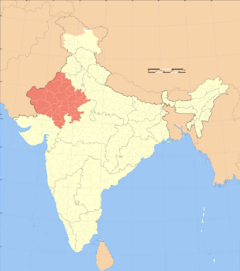Rajasthan
The British called them a martial race. The Rajputs, inhabitants of what today is known as the Rajasthan province of India. Naturally warlike and aggressive in battle.
Today’s Rajputs are descendants of the ancient royal warrior class. They were historically the royal warrior elite and landowning caste (kshatriyas) in northern India, organized into clans under a ruling chief (maharaja). Traditionally, there are 36 royal Rajput clans.
A European equivalent would be the medieval knights of noble blood. Indeed, all of Rajasthan’s main cities resemble the European medieval city states of old, each with an imposing fortress and palace more impressive than the next.
Fierce in battle, Rajput warriors were highly prized in the British armed forces, and to this day occupy a distinguished and disproportionate share of India’s army. Brave, patriotic and bold have been adjectives used to describe them, with a rich tradition of honor and chivalry.
Here’s a famous story from 1303 that helps appreciate the Rajput mindset.
The Sultan of Delhi, Ala-ud-din, heard of the incredible beauty of the new Rajput queen of Chittor, Rani Padmini. Under pretense of being a family relation, he asked her husband, King Ratan Singh, to see her.
Suspecting foul play, Padmini agreed to be seen only via mirror. Stunned by her beauty and instantly infatuated, Ala-ud-din’s men kidnapped the unsuspecting King Ratan Singh, to be released only if Padmini agreed to become his mistress.
Rani Padmini agreed to come out the next morning with 50 servants, and a procession of 150 palaquins (covered carriages) made their way to the sultan’s camp. They were assured that no one would try to peak inside, to preserve the women’s modesty. Instead of Padmini and her retinue, however, these were filled with the king’s best soldiers, who managed to rescue the king from the sultan’s forces and return him to the fort.
The man leading the sneak attack was Gora, Padmini’s uncle. During the rescue, he came within reach of the sultan and could have slain him, but the sultan quickly hid behind one of his concubines, and the Rajput code of honor forbade Gora from harming an innocent woman. He was killed by the sultan’s men.
The furious sultan laid siege to the fort, and after several months it was clear that the situation for the king’s forces was hopeless. The king ordered that he and his men go out for a suicide charge the next day. A final fight to the death rather than face dishonor.
Upon learning of this, Padmini had a large pyre built in one of the fort’s rooms. The morning of the charge, she and all of the palace women, dressed in their finest, leaped into the flames in a final act of self-immolation rather than be taken captive by the sultan.
All the men were killed in battle. All the women died in the fire. But their Rajput story is immortal and recited to this day with pride.
As Pascal and I traveled from Bundi to Udaipur, we passed by the fort of Chittorgarh, where these events happened some 700 years ago, and made our way deeper into the territory of these proud and fearsome warriors.

 Click to subscribe via RSS feed
Click to subscribe via RSS feed

Fantastic story!
I love reading these stories!
This is the kind of story to be told again and again, to children, grandchildren, grand grandchildren…
Now I can appreciate the movie Jaane Tu Ya Jaane Na more – in the movie, a mom tries to raise her Rajput son to be a non-violent Rajput. Funny story.